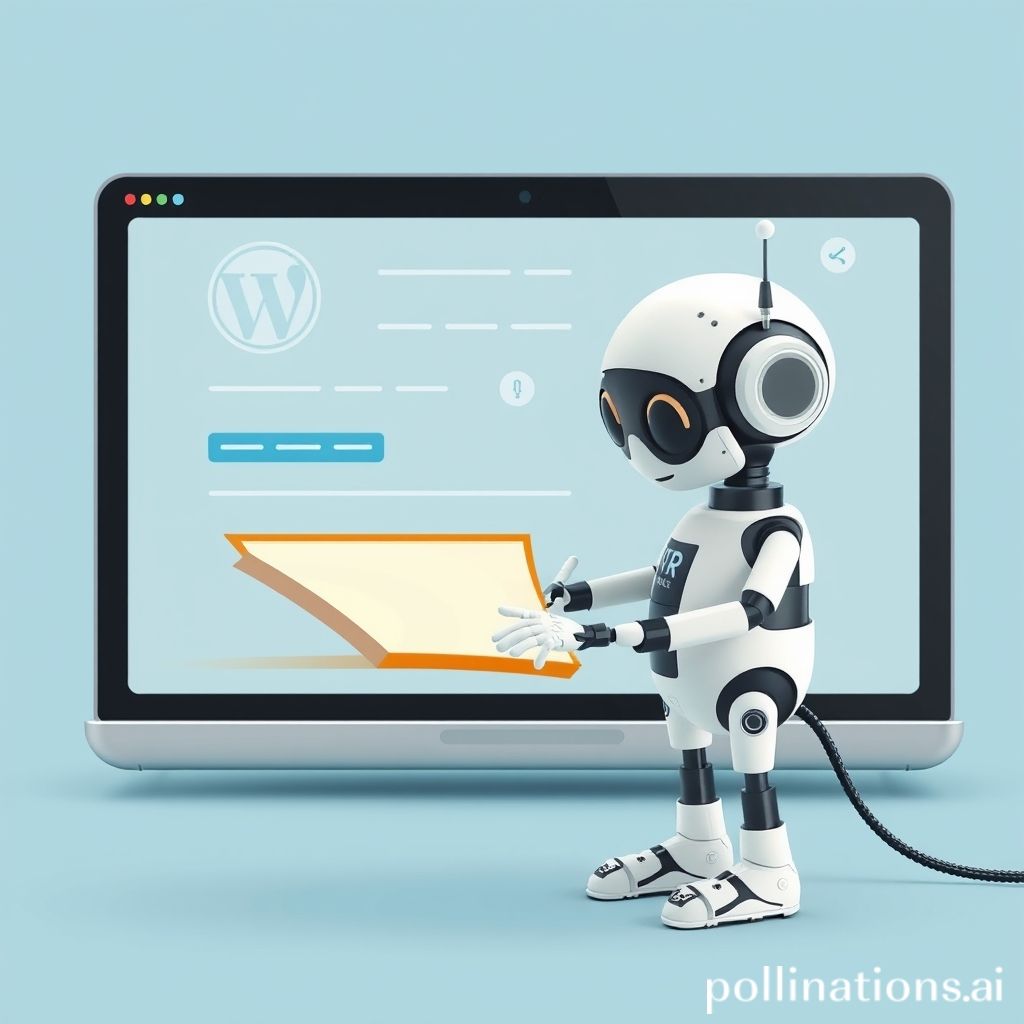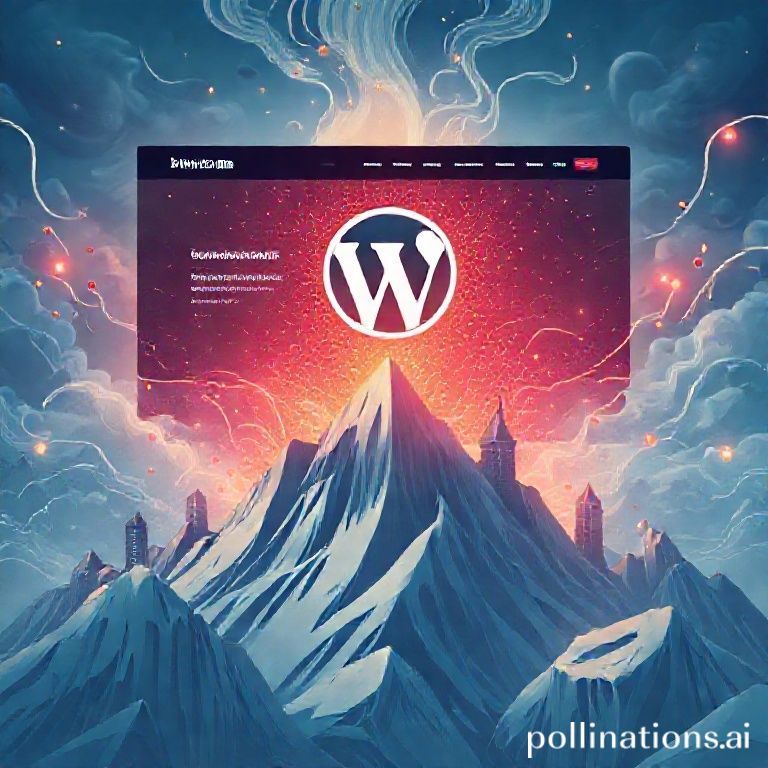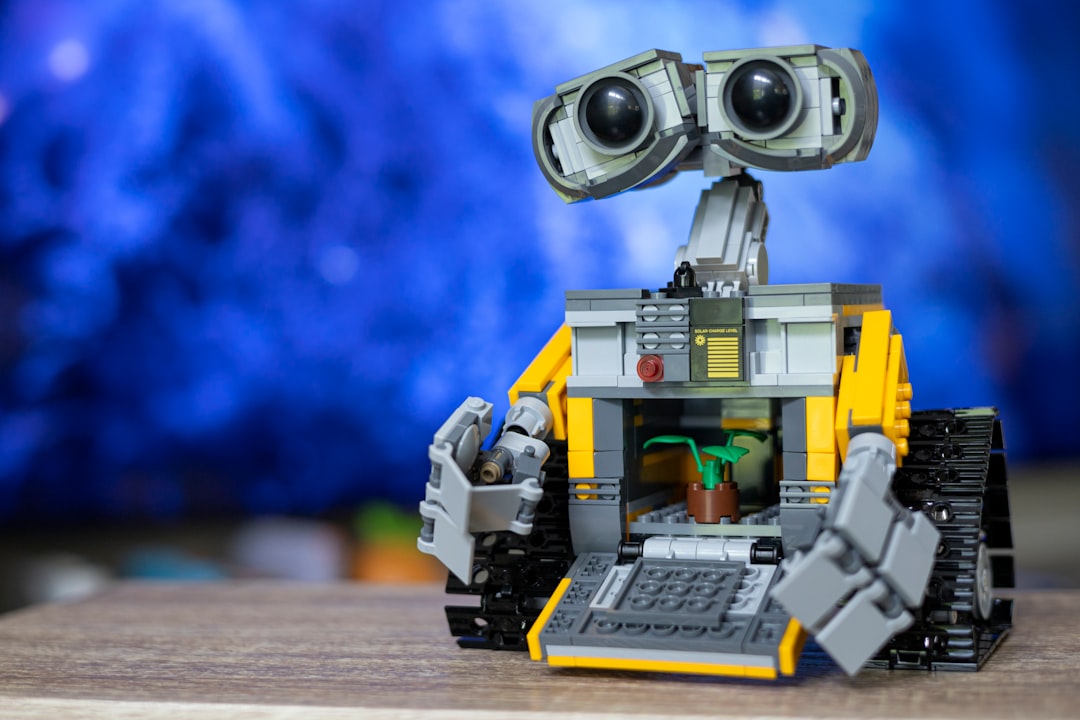Table of Contents
- Introduction
- The rise of AI-powered tools in WordPress and their impact on content creation
- How AI-generated content can revolutionize blogging on WordPress
- The role of AI writing tools in optimizing content and boosting SEO
- Exploring popular AI-powered plugins for WordPress: A snarky guide
- From auto-blogging to content automation: The perks of using AI writers
- Integrating AI content generators into WordPress for streamlined workflows
- AI writing tools as a secret weapon for enhancing creativity and productivity
- Future trends: What to expect from AI in WordPress and content creation
- Conclusion
- Frequently Asked Questions
Introduction
In the ever-evolving landscape of digital content creation, finding the perfect writing assistant can feel like searching for a needle in a haystack. For WordPress users, discovering an AI writing tool that seamlessly integrates with their workflow and enhances their creativity is paramount. Enter the realm of AI-powered solutions, where technology meets art, transforming ordinary words into captivating narratives.
As bloggers, marketers, and content creators strive to produce high-quality, engaging material, the question arises: which AI writing tool stands out in the vast sea of options? This article delves into the heart of AI-driven writing, guiding you through the intricate world of artificial creativity, and helping you unlock the power of words like never before. Get ready to explore the synergies between AI technology and WordPress, and set the stage for unparalleled creative expression.
The rise of AI-powered tools in WordPress and their impact on content creation
Once upon a time, crafting content for WordPress felt like chasing rainbows—beautiful but elusive. Along came AI-powered tools, the knights in shining armor transforming the landscape of content creation. These tools are like magic wands, waving away writer’s block and drafting compelling stories with ease. As they rise, they change the game, making content creation as breezy as a summer’s day. Imagine sitting by a babbling brook, pen in one hand, cup of coffee in the other, while an AI whispers the perfect words in your ear—strange yet thrilling!
AI in WordPress isn’t just a passing fad; it’s here to stay, and it’s shaking things up like a whirlwind. Many a WordPress warrior has breathed a sigh of relief, watching their workload shrink faster than ice cream on a hot day. It’s an irony of our digital age: while technology grows in complexity, content creation becomes simpler and more streamlined. The tools help create content that sings, drawing readers in like a moth to a flame. With AI’s rise, WordPress users find themselves at the helm of a ship, sailing into a future where content is king, and the kingdom’s expansion knows no bounds. Buckle up—it’s going to be quite the ride!
How AI-generated content can revolutionize blogging on WordPress
Picture this: you’re sitting at your laptop, staring at a blank screen like it’s an unsolved riddle. WordPress is open, but inspiration is elusive. Enter AI writing tools—your knight in digital armor. With a flicker of ones and zeros, these tools can whisk you away from writer’s block into a world where ideas seem to sprout like magic beans. Imagine a tool that not only suggests, but crafts unique, engaging content tailored for your audience. It’s not just pie in the sky—it’s happening now.
From brainstorming ideas to polishing your prose, AI-generated content can be like having a creative partner who never sleeps. Need a catchy headline? Done. Want to simplify complex jargon into plain speak? Easy peasy. And it’s not just about speed; it’s about injecting your writing with fresh, innovative angles without losing your authentic voice. Bloggers, once the solo sailors navigating the vast ocean of content, now have a trusty AI co-pilot onboard. No longer are you anchored by time-consuming tasks; AI is breaking those chains. So, why not let AI lighten your load? After all, in the grand theater of blogging, AI is the backstage wizard, quietly pulling the levers, ensuring the show goes on smoothly.
The role of AI writing tools in optimizing content and boosting SEO
Picture your WordPress site as a bustling marketplace, where your content is the vivid array of stalls, each vying for the attention of passersby. Now, imagine AI writing tools as the savvy shopkeepers, adeptly attracting more visitors by optimizing what you have on display. Ain’t that something? These tools help craft content that doesn’t just sit there like a wallflower but actually dances its way into the spotlight of search engines.
Now, let’s dive into what’s really happening. By intertwining key phrases and tantalizing tidbits, AI tools sprinkle a bit of SEO magic on your content, helping it climb higher in search results. You might’ve heard this before—content is king—but it’s the crown of effective SEO that makes it a ruler in its online realm. Oh, the irony of needing robots to enhance human connection!
With AI writing tools, even the tiniest of tweaks can echo profound changes. They smoothen out sentences, add relevant keywords seamlessly, and—like a wise old sage—suggest what your audience really craves. This isn’t just optimization; it’s transformation, turning good content into a captivating narrative that resonates far and wide, like ripples in a pond. So, what are you waiting for? Give those AI tools a go and watch your content take flight!
Exploring popular AI-powered plugins for WordPress: A snarky guide
Ever found yourself wishing your WordPress site could write as wittily as Oscar Wilde after a double espresso? Welcome to the magical world of AI-powered plugins! Let’s dive into this realm where your content practically writes itself, and sometimes even better than the humans could—no offense. First up, we have Yoast SEO, oh-so-popular with its user-friendly guidance and a truth bomb of insights into what your site needs. It whispers sweet nothings in HTML’s ear and makes search engines fall head over heels for your content. Now, journey with me into the realm of Jetpack—where everything is smoother than a silk slipper sliding across a polished floor. Packed with goodies like site stats and backups, it’s your WordPress guardian angel. But hold your horses, there’s more! Rank Math enters like a knight in digital armor, promising to vanquish the foes of low SEO rankings with its arsenal of smart suggestions. Each of these plugins, a dashing hero in its own right, transforms your WordPress experience from drab to fab. So, if your site’s looking for a sprinkle of magic, or maybe just a boost into the 21st century, these plugins are the right piece de resistance for your blog!
From auto-blogging to content automation: The perks of using AI writers
Once upon a time, in the bustling world of bloggers and busy bees, there roamed a mystical tool that promised to transform mundane tasks into a cakewalk. Yes, you guessed it, AI writers! Imagine scribbling away at your keyboard, and poof—a genie appears, offering a helping hand in crafting those elusive words. Intriguing, right? That's exactly what AI brings to the table, serving as your digital pen pal. From auto-blogging to full-blown content automation, these AI tools are like the Swiss army knife of writing.
Picture this: it's late at night, your eyelids are heavier than a lead balloon, and deadlines are looming like storm clouds. Enter AI, as swift as a whisper, ready to churn out blog posts while you catch some Z's. The perks are almost an embarrassment of riches. Consistency? Checked. Creativity? Let's say it's a rollercoaster ride. For those juggling a gazillion tasks, AI writers can whip up engaging content faster than you can say "Bob's your uncle"! It saves time, and effort, and keeps the creative juices flowing as smoothly as a hot knife through butter. So, why bite off more than you can chew, when AI's just a click away?
Integrating AI content generators into WordPress for streamlined workflows
Picture this: You’re running a WordPress site, juggling content like a circus performer spinning a dozen plates. Enter AI content generators, swooping in like a trusty sidekick to save the day. Integrating these tools into WordPress is like adding a jetpack to your workflow—a burst of innovation and efficiency.
Now, just think about it. You’ve got deadlines ticking like a countdown in a suspense novel. The AI writer steps in, offering a helping hand, crafting content faster than you can say ‘Bob’s your uncle.’ It’s as if the endless typing at your keyboard suddenly turns into the gentle strum of a guitar, smooth and harmonious.
Ah, but there’s more than speed to this story. AI tools integrate with WordPress like peanut butter does with jelly, making it a breeze to not just churn out content but also optimize it. SEO? Check. Style consistency? Double-check. You’re not just managing content; you’re conducting a symphony.
Imagine a burgeoning writer stumbling upon this tech magic, eyes widening, as they realize authorship’s new frontier. It’s like discovering a treasure chest in a dusty attic, sparkling with promise and potential. The narrative of your WordPress workflow, once a simple tale, now unfolds into an epic saga of productivity.
AI writing tools as a secret weapon for enhancing creativity and productivity
Imagine sitting with a blank page, eyes staring like a deer in headlights, fingers hovering over the keyboard but words just won’t come. Enter AI writing tools—your digital muse and secret weapon for unleashing creativity and productivity. They’re like a trusty sidekick, always ready to jump in with a spark of inspiration or a burst of suggestions just when you’re stuck. Suddenly, your article flows like a river, and the dreaded writer’s block crumbles like a house of cards.
Now, you’re probably wondering, ‘Can a machine really help in creating art?’ Well, AI writing tools don’t replace the human touch but enhance it, like adding a dash of spice to your favorite recipe. These tools dive into the vast ocean of information, fetching pearls of wisdom that can be molded into your narrative, transforming it from a plain Jane into a dazzling masterpiece. Like an unexpected plot twist, they surprise you with ideas you hadn’t thought of, making your content as engaging as a page-turner.
With AI by your side, watch your productivity soar sky-high, because these tools take care of the grunt work while you sprinkle your magic over the prose. So, why not embrace these digital companions and write your story, your way?
Future trends: What to expect from AI in WordPress and content creation
Isn’t it fascinating how AI is reshaping the landscape of WordPress and content creation? Well, it’s just the tip of the iceberg. The future holds a treasure trove of possibilities. Imagine AI as a helpful sidekick, whispering suggestions for content topics right when your brain feels like a blank canvas. It’s like having a trusted friend who knows just the right words to spark your curiosity.
As AI becomes more intertwined with WordPress, it’s turning into the magical wand writers have always dreamed of. Not only will it master the art of grammar and structure, but it’ll spin tales with the right tone – from chatty blog posts to formal articles. Oh, the world of words is expanding!
Transitioning into the near future, we might hear the cheerful chime of notifications as AI predicts trending topics, paving the golden path for content creators. Gone are the days of staring at a blinking cursor, as AI nudges writers towards engaging ideas. Like a quiet river, AI will smoothly introduce collaborative features, enabling teams from across the globe to write in harmony.
This little tale of AI in WordPress is peppered with whimsy and wonder. So, fasten your seat belt, because this journey is just getting started!
Conclusion
The evolving landscape of WordPress content creation is being revolutionized by AI writing tools. With the ability to generate, optimize, and enhance content, these tools are ushering in a new era of creativity and productivity. Websites without the integration of advanced solutions like WPHorde risk being left behind in this dynamic digital age. Harnessing AI’s potential not only simplifies workflows but also transforms content into compelling narratives that captivate audiences and elevate SEO performance. Don’t let your site fall into obscurity—embrace tools like WPHorde as your secret weapon, ensuring your content remains at the forefront of innovation. Start today, and ride the wave of technological advancement to new heights of success.












 Imagine a world where algorithms craft stories, curate content, and even evoke emotions through pixels and prose. While innovation has long been the backbone of digital expression, the thought of AI wielding the creative pen poses both exhilarating opportunities and bewildering dilemmas.
Imagine a world where algorithms craft stories, curate content, and even evoke emotions through pixels and prose. While innovation has long been the backbone of digital expression, the thought of AI wielding the creative pen poses both exhilarating opportunities and bewildering dilemmas.



